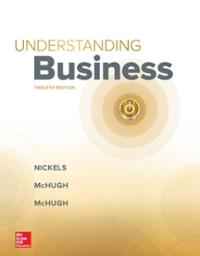


Kindly explain the following
12. A monopolist has a single production plant in California with a total cost function of c(Q) = =Q2, where Q is total output. The good can be sold to two separate markets, those on the west coast and those on the east coast. There is no resale between coasts. The inverse demand function for the east coast is given by p = 100 - qe and the inverse demand function for the west coast is given by p = 80 -=qw a) Calculate the monopolist's profits if he uses standard uniform pricing. b) The monopolist can build a second plant in Massachusetts (i.e. an east coast plant) that is identical to the California plant (i.e. west coast plant), and plans on producing output for each region at their respective plant. He will then treat these markets as separate, charging different prices to each market. If the cost of constructing the plant is $1200 should the monopolist build the second plant? How much should the monopolist be willing to pay for the plant? Explain.13. Consider a monopolist facing a market demand p = 10-2q. The monopolist's total cost function is C (q) = 2q. (a) Compute the price elasticity of demand, 7. (Hint: n is a function of q.) (b) Show that 7 = 1 is attained at q = 2.5. (c) Confirm that n > 1 ifq 2.5. (d) Compute the monopolist's optimal output, q's, and price, pull. (e) Is it true that if C" > 0, then profit maximization will always occur at the elastic segment of the demand curve? (Hint: Compute n at q .) (f) Show that R' = p (1 - 2 ) holds at the monopolist's optimal output, q's, and price,Suppose that you are a silver fabricator. You will acquire 2,000,00D troy ounces of silver at the prevailing market price on March 2029, from your long-time business partner. But, you worry about the uncertainty in the market price of silver in the future. Hence, you decide to use Globe: ["online"] silver future contracts to hedge risk. You will place an order of silver future contracts at the last day closing price of the date when you enter into the futures contracts at the last closing price of March 2020 future the date when you enter into the future contracts. 1. Which type of hedge, between short and long, has to be used? 2. What is the contract size of the silver futures per one contract? How many contracts do you have to trade? 3. State the December futures price [last closing price} that you determined. Attach the snapshot of the price listing. See an example. 4. Assume that both the spot and future prices on the March 2D2I'J maturity date, 201? are 511 per ounce. Find out prots of the unhedged spot position, future position and hedged position {hedged position = unhedged spot position + future position] 5. Assume that both the spot and future prices on March 2'02!) maturity date are 526 per ounce. Find out prots of the unhedged spot positionI future position and hedged position. 6. Discuss the effectiveness of your hedged. T. Now, suppose that you don't have to acquire L ounces of silver from your business partner at the spot market in July. You will directly use the silver future market to acquire silver and to hedge price risk. Determine the cost to acquire silver of LDD ounces in the futures market only. Explain this hedge and compare with the hedged in [1] ~ {5]. marginal cost coincides across plants. Intuitively, this indicates that the monopolist does not have further incentives to move production from one plant to another. Exercise #7 - Price discrimination with linear costs Consider a monopoly facing inverse demand function p(q) = 100 - q, and total cost TC(q) = 4q. a) No price discrimination. Assume that price discrimination is illegal. What are the monopolist's optimal output, price and profits? b) First-degree price discrimination. For the remainder of the exercise, consider now that the monopolist can practice price discrimination. In addition, assume that this firm has enough information to practice first-degree (perfect) price discrimination. What are the monopolist's optimal output, price and profits? c) Two block pricing. Assume that the monopolist offers price discounts (i.e., two blocks of units, each sold at a different price per unit). What are the monopolist's optimal output, price and profits? d) Comparison. Compare the monopolist's profit under each of the above pricing strategies, and show that the profits in part (b) are the highest, followed by those in (c), followed by those in part (c), and by those in part (a). Exercise #8 - Third-degree price discrimination with convex costs Consider a monopolist facing two groups of costumers, 1 and 2, with inverse demand functions P1 (q) = a1 - bq and P2(q) = a2 - bq, respectively, where a, > a2 > 0 and b > 0. The monopolist has convex cost function TC(q) = c(q)? where c > 0. a) Set up the monopolist's profit-maximization problem for each group of customers. b) Find its profit-maximizing output and price for each group of customers. ) Assume that a, = taz, where t > 1. Evaluate your above results using a, = taz, and determine how the output difference across groups of customers, and the price difference, are affected by a larger value of t. d) What would happen if t = 1, so the inverse demand functions coincide for both groups of customers













